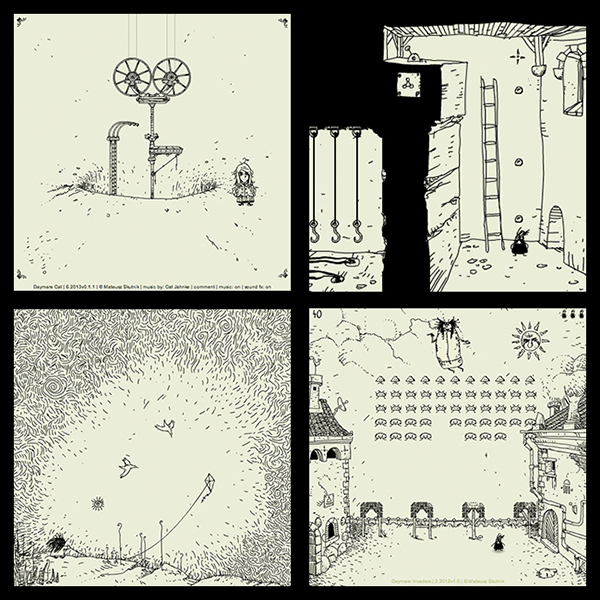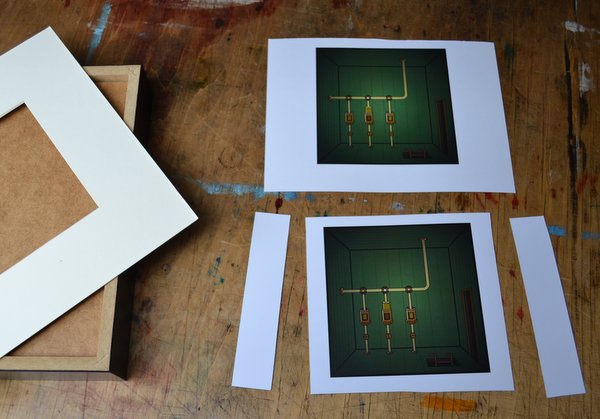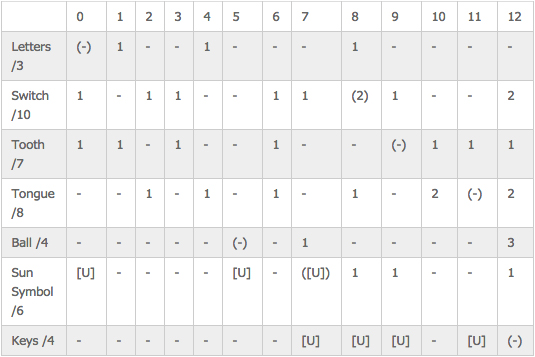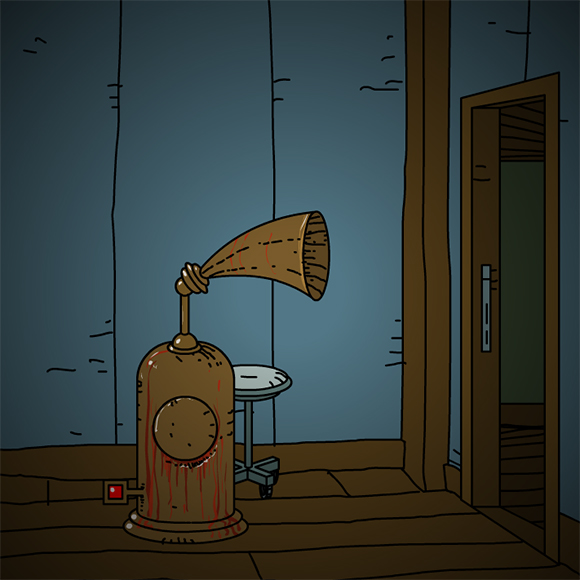De Chirico e Submachine – l’oggetto misterioso
March 23, 2015
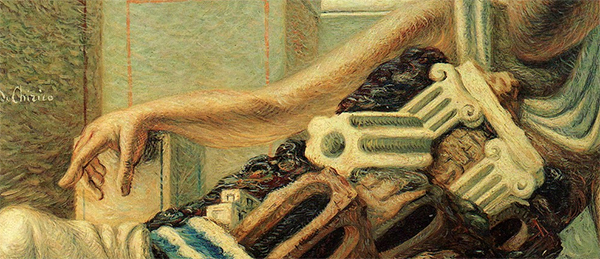
Teso di – Federico Scarfo’
Avete presente quando in un sogno, mischiando pezzi di vari posti visitati in passato, case, strade, statue, il vostro cervello riesce a ricreare un’immagine unica, inquietante per la sua capacità di evocare sentimenti familiari ma allo stesso tempo di mantenersi estranea ed aliena? Ecco, questo è uno dei temi principali che accomuna due cose disperatamente diverse: la pittura metafisica di De Chirico e la a mio parere sfortunata serie di flash games punta e clicca del graphic artist polacco Mateusz Skutnik, Submachine. Dico sfortunata perchè, essendo più che sicuro di non aver bisogno di fare una presentazione del pittore greco, lo stesso non vale per Submachine: appartenente alla razza sfigata dei flash games, ovvero giochi a cui si può tranquillamente giocare gratis sul sito d’origine e che tendono a essere piuttosto brevi, il riconoscimento di cui gode la serie è stato sempre meno che risonante. Nonostante Submachine non sia mai stato un “innovatore” del genere punta e clicca, inaugurato da giochi leggendari come “The Secret of Monkey Island“e “Clock Tower“, a mio avviso possiede una giocabilità eccellente per un flash game, unita a una storia minimale e interessante, alla Matrix, che spinge il giocatore a fare tesoro dei pochi indizi che trasudano dal velo opaco del gameplay. Della trama si capisce che il protagonista è intrappolato nella Submachine, una macchina che replica virtualmente un numero infinito di aree chiuse, tra le quali si può viaggiare tramite portali. Tuttavia, il vero punto di forza della serie sono l’ambientazione, la grafica e il sonoro, elementi, per l’appunto, metafisici. Infatti si collegano con numerosi rimandi alle linee tematiche di De Chirico selezionate per la mostra “De Chirico e l’oggetto misterioso“, a Villa Reale, che è stata per l’appunto il motus primus di questo articolo. Come suggerisce il titolo stesso, ammiccante soprattutto alla serie di quadri ritraenti “l’oggetto misterioso”, la mostra si è concentrata principalmente sul rapporto di De Chirico con gli oggetti, le figure inanimate, opposte e surrogate del vivente.
Come ho già introdotto, il primo punto di similitudine è l’incombere dello scenario sulle sue singole componenti, generando un ambiente oppressivo, pauroso, onirico. Nel quadro “La Meditazione di Mercurio“, la sensazione di claustrofobia è alimentata dallo spazio prospettico, angusto, in fondo al quale giace un busto classico, la cosa più simile a una persona che appare sia nella pittura metafisica, sia in certe sezioni di Submachine. Allo stesso modo, i quadri di De Chirico ambientati in un ambiente esterno non risultano meno inquietanti, poiché formano una composizione onirica i cui limiti incombenti sono il cielo piatto e le ombre larghe e geometriche, non meno solide dei muri. Submachine è ambientata in una serie di luoghi, per la maggior parte chiusi, artificiali e perlopiù in rovina. Per esempio, in uno stesso episodio, sfruttando l’elemento di gameplay dei portali, il personaggio visita una nave, una cantina, la sezione di una tomba in rovina, resti di un tempio, e vari altri posti, nei quali è facile distinguere il tocco dello stile singolare di Skutnik. Ognuna di queste location è abbandonata a se stessa, in rovina, malfunzionante, e la tematica della bruttura e della decadenza si mescola con la sensazione di claustrofobia, di essere fuori posto, e di essere ospiti non desiderati.
La seconda caratteristica comune deriva da una seconda sensazione, quella della solitudine. Nella maggior parte della pittura metafisica, e in ogni sezione di Submachine, non si trova alcuna presenza umana. In Submachine, tuttavia, restano tracce anche recenti, il che è paradossale rispetto alla decrepitezza degli ambienti. La maggior parte della storia viene narrata tramite note, lasciate indietro da personaggi più sfortunati e morti da tempo, o costretti a fuggire. L’unico contatto umano della serie avviene tramite computer, ed è unilaterale, dal momento che il nostro eroe non possiede una tastiera. L’isolamento è il potere più grande della Submachine, la macchina “nemica”, dovuto alla sua immensità e alla sua abilità nel crescere ed espandersi, separando e polverizzando per sempre allo stesso modo i pochi umani e gli oggetti. La sensazione di solitudine in De Chirico, invece, deriva da una sensazione surreale di familiarità. De Chirico rappresentava gli ambienti come visti dal finestrino di un treno, spiegando di voler riprodurre quella sensazione che si prova quando, passando vicino a una città, la si sente più familiare delle persone che ci vivono. Questo mappa dentro ognuno una rappresentazione intima del luogo, da cui sono esclusi i non-familiari, ovvero tutti gli altri. La sensazione di familiarità che le location di Submachine comunicano è invece legata alla disperazione del braccato, di quello che, perso nel bosco, riconosce con orrore di aver girato in tondo per ore e ore.
Infine, l’ultima caratteristica comune è il ruolo di primo piano dato agli oggetti. Come nelle “vite silenti” o nella serie dell’”oggetto misterioso” di De Chirico, nelle quali gli oggetti vengono messi su un palco a dispetto delle figure umane che vengono relegate senza volto sullo sfondo, in Submachine gli oggetti sono fondamentali. Infatti, quale installazione può dare maggior rilievo a oggetti comuni più di un gioco per vincere il quale bisogna sfruttare ciò che si trova e usarlo per interagire con l’ambiente circostante? Tutto ciò che di utile esiste in Submachine è un oggetto, una nota o uno schema, praticamente non esistono personaggi secondari, o se ci sono, ci si interagisce solo tramite note ed essi rimangono invisibili per tutta la serie. Al contrario le statue, le rappresentazioni e i macchinari in vago stile steampunksono onnipresenti, facendo una mimica di ciò che ci si aspetterebbe, ovvero il mondo “vero” al di là della Submachine (è tuttavia suggerito nel corso della storia che il mondo “vero” non sia una realtà esterna alla Submachine). Per la loro utilità e addirittura il senso di “compagnia” che se ne può trarre, – in fondo, sono gli unici alleati del giocatore contro un triste destino – gli oggetti sono umanizzati in Submachine, e questo deriva direttamente dall’umanizzazione in una sorta di nemico invincibile della Submachine stessa, che, lungi dall’essere semplicemente un’unità virtuale, come si suppone che sia, è un avversario, astuto e dalle immense risorse, che regna su un infinito spazio in cui il rapporto tra oggetti e umani è rovesciato, e l’unico suono che si sente, è il rumore di cigolii, muoversi di macchine, sinfonie non umane che corredano il quadro metafisico che è questo gioco. De Chirico ha rappresentato “gli archeologi”, un tema ricorrente della sua pittura, come uomini “ripieni” o composti da oggetti, elementi architettonici principalmente. Gli “archeologi” sono più che mai il punto di incontro tra il pittore e Submachine, rappresentando il tema della familiarità interiore, il “possedere” in modo univoco un particolare luogo o città, una ricorrente umanizzazione dell’inanimato, e, al contrario, una perdita di definizione e un oggettivizzazione, nel senso più letterale, della figura animata, che, così come il protagonista di Submachine, viene ridotta a un inventario di oggetti.








